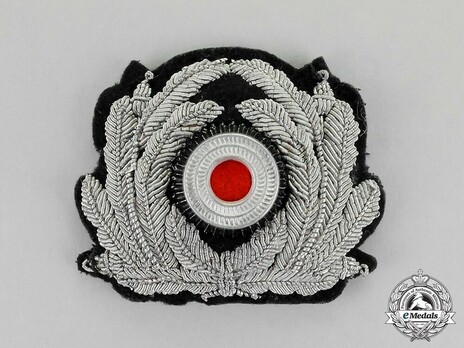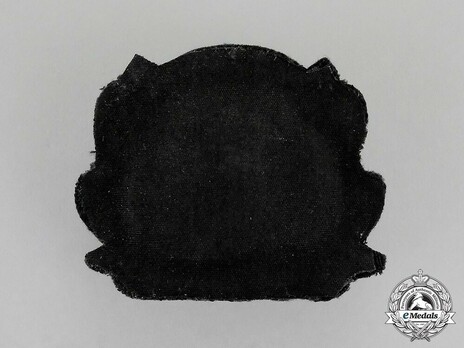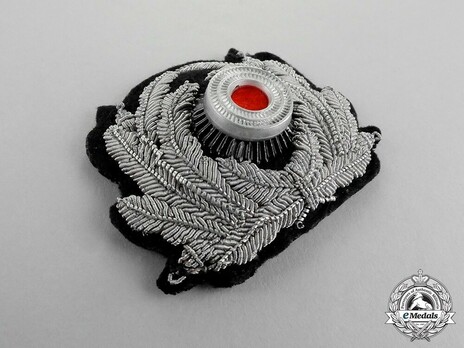Kriegsmarine Administrative Official's Hand-Embroidered Cap Cockade & Oak Leaves Insignia
CATEGORY: Version
SKU: 21.GOR.03.01.02.004.000
Estimated market value:



Estimated market value:
Cloth Wreath and Metal Cockade; constructed of rolled, twisted, and flat silver aluminum bullion embroidery with a metal cockade; padded core; on a dark blue wool backer on black rayon backing; measuring 64 mm (w) x 53 mm (h); in overall mint and unissued condition.
The oak leaf wreaths and cockades worn on uniforms during the Third Reich were instituted mid-March 1933. In 1933, the Weimar Republic eagle cockade was replaced with a national tricolour cockade. There are only a few infinitesimal design dissimilarities between the Third Reich oak leaf wreath and the Weimar Republic oakleaf wreath, such as the placement of the acorns. On Kriegsmarine headgear, the cockade was worn at the centre of the oak leaf wreath.
The cockade always featured the black-white-red national colours combination, but the colour of the oakleaf wreath reflected the wearer’s rank group. The oakleaf wreath was gold-coloured for all regular Kriegsmarine personnel and silver-coloured for Officials with the rank of Officer. The tricolour cockade and the oakleaf wreath were both manufactured in embroidered and metal versions. The embroidered insignia were manufactured with bullion, celleon, or aluminum when hand-embroidered. When they were machine-embroidered they feature artificial silk thread.
The metal oak leaf wreaths were not introduced until late August 1940. This material change arose as a result of the lack of available materials for embroidered insignia. The metal wreaths were always worn with a metal cockade, and they were both primarily composed of pressed, light-weight metals. The embroidered wreaths could be worn in combination with a metal cockade.
The metal cockades were manufactured using Neusilber (nickel silver) and vulcanized fibre from 1933 until 1935. After 1935, the cockades were primarily composed of aluminum and other lightweight metals. The national tri-colours were often painted on the cockade’s metal obverse surface, and the reverse of the metal cockades features either two or four attachment prongs.
Both types of metal insignia were stamped to look as though they were embroidered.
The size of the insignia varies widely as a result of different manufacturers and the size of the cloth backing. The backing for insignia worn with the blue and white uniform was black or dark blue, while that for the field-grey coastal artillery uniform was field-grey or dark blue-green, and that for the brown tropical uniform was blue or sometimes brown.

Comments
Sign in to comment and reply.


Scroll Top